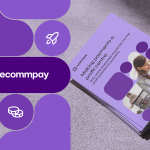
When your ideal buyer wears a title like “Head of Strategy,” “VP of IT,” or “Chief Marketing Officer,” where you show up matters just as much as what you say. That’s where LinkedIn holds a distinct advantage. Unlike broader social platforms built for entertainment or connection, LinkedIn is built for business—literally. And that difference changes everything, especially when your audience is made up of high-level professionals and decision-makers.
A Platform Where Professional Identity Drives Behavior
LinkedIn is the rare social network where users build a profile not for self-expression or fun, but to reflect their career. Every post, every connection, every comment—it’s all shaped by a professional lens. That mindset makes a huge difference in how content is received and interacted with.
When a C-suite executive logs into LinkedIn, they’re not looking to be entertained—they’re scanning for trends, seeking inspiration, tracking competitors, or evaluating potential vendors. That kind of intentionality is gold for marketers trying to reach B2B audiences. You’re not fighting for attention in a sea of vacation pics and memes. You’re meeting people where they already expect to engage with business-related content.
Credibility Starts Higher on LinkedIn
On most platforms, a paid ad is just that—an ad. But on LinkedIn, an ad from a credible brand can actually feel more like part of the conversation. Because users are already consuming content from industry leaders, consultants, and peers, a well-positioned ad can blend in with the flow of professional insight-sharing.
When you speak to executives in their language—through thought leadership, relevant use cases, or data-backed insights—your message isn’t seen as intrusive. It’s timely. It’s potentially valuable. And it carries more weight because of where it’s being seen.
Targeting by Role, Not Just Interest
One of the biggest limitations on other platforms is targeting. You might be able to narrow by interests or demographics, but those filters are fuzzy and inconsistent—especially for B2B. What does it mean when someone is “interested in tech” on Facebook? It could mean anything from reading Wired to using their iPhone a lot.
LinkedIn, on the other hand, gives you access to hard data: job titles, industries, years of experience, seniority level, company size. You can build campaigns that focus specifically on Heads of Procurement at enterprise retailers—or CFOs at mid-market software companies.
That level of granularity helps you avoid wasted impressions. And when you’re investing in content or conversion efforts, reaching the right eyeballs from the start is half the battle.
Aligning Messaging With a Business-Minded Audience
Executives don’t have time to wade through fluff. That’s why messaging on LinkedIn needs to cut to the point. Whether you’re offering a solution, a case study, or an insight, clarity and value have to show up fast.
But that doesn’t mean your content should be dry. Quite the opposite. Professionals are still people—and they respond to well-told stories, surprising stats, and messages that feel human. The key is relevance. When your ad speaks directly to the challenges and goals of a particular role or sector, engagement follows.
Understanding LinkedIn Ads best practices isn’t just about following platform guidelines—it’s about tuning your messaging to the expectations of a high-level, efficiency-driven audience. Show them how you solve problems they’re already thinking about. And don’t be afraid to be specific. Vagueness is a conversation killer.
High-Quality Interactions Over Vanity Metrics
Engagement on LinkedIn often looks different from other platforms. You might not get as many likes or shares—but the quality of interactions can be exponentially higher. A comment from a VP of Sales, a direct message from a procurement lead, a demo request from someone in the C-suite—these are the signals that matter.
LinkedIn isn’t built for going viral. It’s built for starting meaningful conversations. And that makes it ideal for B2B campaigns focused on long-term value rather than short-term hype.
If you’re tracking metrics, it’s worth adjusting your expectations accordingly. Impressions and CTRs still matter, but they’re not the full story. Engagement from the right job titles, companies, or industries is where the real gold lies.
A Platform Designed for Professional Momentum
What makes LinkedIn unique isn’t just its features—it’s the momentum it creates. A well-run campaign can create awareness, build authority, and generate leads all in one place. Especially when you’re following LinkedIn Ads best practices like nurturing warm audiences, sequencing content across the funnel, and testing creative with real buyer personas in mind.
And because your audience is already in a business mindset, you’re not having to shift their attention—you’re simply adding to the professional input they’re already consuming. That’s a rare and powerful alignment.
Final Thoughts
If your buyers are in boardrooms, not browsing for fun, LinkedIn gives you something other platforms can’t: context. You’re showing up in front of the right people, at the right time, with the right mindset.
That’s not a guarantee of success—but it’s a massive head start. For marketers who understand how to speak to professional audiences without sounding generic or overly formal, LinkedIn is a channel that can deliver both engagement and real results.












